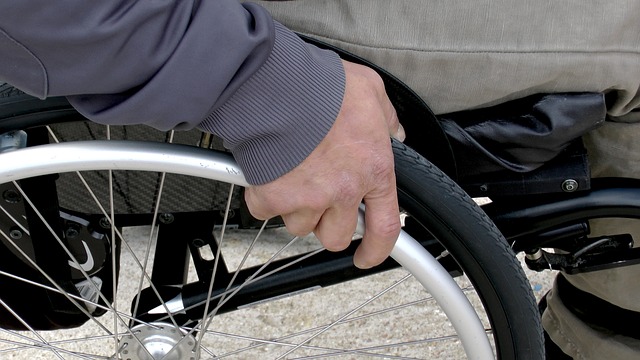Middletons Folding Mobility Scooters — A Practical Guide to Models, Folding, Care, and Purchase
Folding mobility scooters from retailers like Middletons appeal to people who want compact, practical travel support without complex assembly. This guide explains how models differ, what folding systems mean for portability, how batteries and range work, and what to check for comfort, safety, pricing, warranty, accessories, and support before buying in your area or online.

Choosing a folding mobility scooter involves balancing portability, everyday comfort, safety features, and long‑term ownership costs. Retailers such as Middletons often stock compact models designed for travel and small spaces, but the right option depends on where you plan to ride, how far, and how much you can lift or wheel when folded. Understanding key specs and care routines will make day‑to‑day use smoother and help the scooter last longer.
Overview: models, use, and key specifications
Folding mobility scooters commonly fall into manual‑fold and auto‑fold categories. Manual‑fold designs usually weigh less and cost less, while auto‑fold models add powered mechanisms for quick setup. Consider intended use: indoor navigation and short errands favor smaller frames and tight turning radii, while outdoor pavements and light inclines benefit from slightly larger wheels, suspension, and higher ground clearance. Typical specs to review include weight capacity (often 100–130 kg), top speed (commonly 6–8 km/h where regulations allow), turning radius, ground clearance (around 4–8 cm), gradient rating (often 6–12 degrees), and wheel type (solid vs pneumatic). Match these to your daily routes, entryways, lifts, and storage spaces.
Design and folding: portability, weight, and setup
Portability depends on total weight, folded size, and whether you’ll lift into a car boot or roll like luggage. Many folding scooters weigh 15–27 kg; very light carbon or magnesium frames can dip below that, but may trade off ride comfort. Check whether the tiller collapses, the seat folds, and if there’s a trolley‑style handle to roll the unit. Auto‑fold models simplify setup through a remote or handlebar switch, useful for those managing pain or limited dexterity. Look for clear folding latches, finger‑safe hinges, and positive locks to avoid accidental collapse. If lifting is difficult, consider boot hoists or ramps offered by local services in your area.
Battery, range, and charging: performance and replacement tips
Most folding scooters use lithium batteries for lighter weight and faster charging. Typical packs are 24V with 10–12 Ah (roughly 240–288 Wh), offering an estimated 10–20 km per charge depending on rider weight, terrain, temperature, and speed settings. For reliable range, plan on 60–70% of the headline figure as a practical expectation. Good charging habits include topping up after use, avoiding full discharge, and storing around 50–80% charge if unused for weeks. Replace batteries when range noticeably declines or the pack no longer holds charge consistently. If you travel by air, verify the battery’s watt‑hours and UN 38.3 certification, and confirm airline rules in advance. Off‑board chargers can be convenient when leaving the scooter in a hallway or car.
Safety, comfort, and maintenance essentials
Safety features that matter day‑to‑day include responsive electromagnetic brakes, anti‑tip wheels, speed limiters, and good low‑speed control for tight spaces. Lighting, reflectors, and a horn improve visibility in busy areas. Comfort comes from adjustable tiller angles, supportive seats, armrests, and, where available, basic suspension or larger wheels to soften bumps. Regular maintenance keeps performance consistent: wipe frames and connectors dry after rain, check tires for wear, examine quick‑release pins and latches, and keep charging ports clean. Monthly, inspect brake response and steering play, and ensure the folding mechanism locks firmly. Many retailers and local services offer annual safety checks and servicing; keeping a log of service dates helps with warranty claims.
Buying guide: pricing, warranty, accessories, and support
Pricing varies by frame materials, battery size, and folding technology. Manual‑fold models generally cost less; auto‑fold and premium lightweight builds cost more. Expect meaningful differences in after‑sales support—look for clear warranty terms (often 12–24 months on the scooter, and specific coverage for batteries), accessible spare parts, and repair options. Useful accessories include spare batteries (where compatible), off‑board chargers, travel covers, cane or crutch holders, seat upgrades, and puncture‑resistant tires. Before purchase, test maneuverability, folding ease, lifting or rolling effort, and braking feel. Ask about delivery setup, training, and whether service plans or extended warranties are available in your area.
| Product/Service | Provider | Cost Estimation |
|---|---|---|
| AutoFold Elite (folding scooter) | Drive DeVilbiss Healthcare | £1,800–£2,400 (UK) |
| Lite (folding scooter) | eFOLDi | £2,300–£2,800 (UK) |
| Minimo Autofold (folding scooter) | TGA Mobility | £2,200–£2,700 (UK) |
| Transport AF+ (folding scooter) | EV Rider | $2,000–$2,600 (US) |
| iRide 2 (lightweight portable scooter) | Pride Mobility | $1,200–$1,700 (US) |
Prices, rates, or cost estimates mentioned in this article are based on the latest available information but may change over time. Independent research is advised before making financial decisions.
Real‑world costs depend on taxes, regional availability, promotions, and configuration (battery size, seat upgrades, accessories). When comparing offers from retailers such as Middletons or other local providers, look beyond headline price to include delivery, setup, service plans, and repair turnaround times. Availability can change, so confirm current stock, test‑ride options, and returns policies before ordering.
In summary, a folding mobility scooter is a blend of compact engineering and everyday practicality. Define your routes and storage constraints, decide how much you can lift or prefer to roll, and verify range needs against real conditions. Pay close attention to safety features, comfort fit, and service access. With a careful evaluation of specifications, folding design, battery details, and total ownership costs, you can choose a model that supports independent travel at home and on the move.




